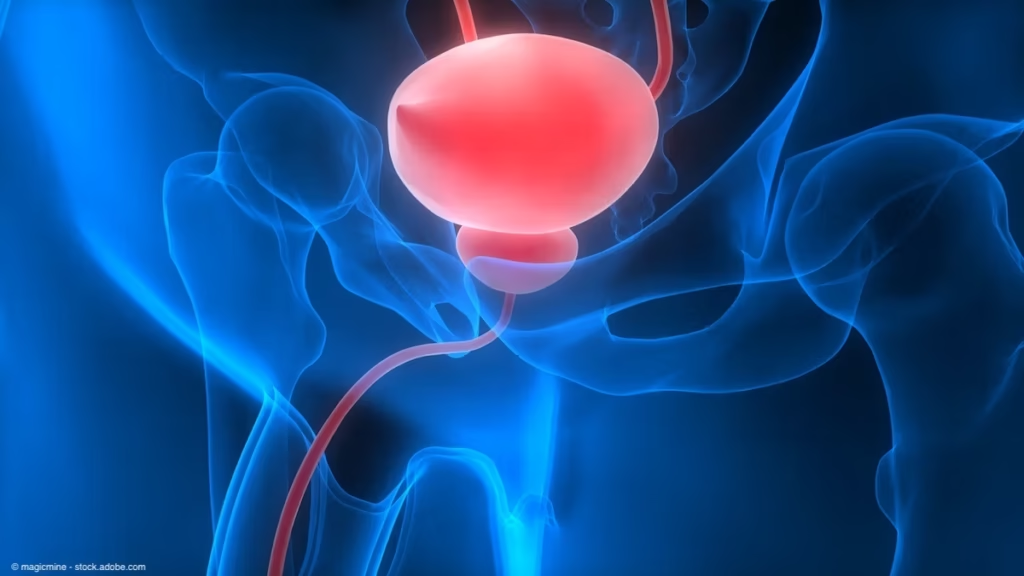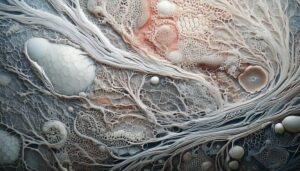What is Haematuria? Causes, Diagnosis, and Treatment
If you have noticed a change in your urine, like spotting blood, it’s normal to feel a little alarmed. This is what we call “haematuria or blood in urine.” Hearing it for the first time might be scary, but if you understand how it occurs, you can better control it. What is haematuria and all else you need to know, learn about them here.
Contents
What is Haematuria, and Why Should You Care?
Haematuria simply means there’s blood present in the urine, which can range from a harmless, temporary issue to a sign of something more serious. While it might seem alarming, haematuria is more common than you’d think. According to the British Journal of General Practice, the background rate of asymptomatic non-visible haematuria is more common in UK males, around 2.5%, increasing to 22% in those aged > 60.
Types Of Haematuria – What You Can and Can’t See
There are two main types of haematuria: microscopic and gross. Knowing the difference between the two can be helpful if you’re trying to understand whether something might need attention.
Microscopic Haematuria
Microscopic haematuria is when blood is present in the urine but only detectable through a microscope. This type often goes unnoticed by patients, as the red blood cells are invisible to the naked eye. Despite its hidden nature, microscopic haematuria can still indicate an issue in the urinary tract, kidneys, or bladder. It is especially considerable in patients with kidney or urinary tract stones.
Gross Haematuria
Gross haematuria, on the other hand, is much easier to spot. This type of haematuria causes urine to be distinctly red, pink, or brown due to the presence of blood. It is generally associated with an advanced stage of haematuria and thus often manifests with other symptoms, like pain or discomfort, which are alarming enough to signal patients to seek medical help.
Did you know: A simple test known as a dipstick can detect blood in the urine, even in microscopic haematuria, helping you identify potential problems early.
Haematuria Causes: From Common to Rare
When blood appears in the urine, it can have various causes—some common and benign, while others indicate more serious conditions.

Common Causes
Urinary Tract Infections (UTIs):
UTIs, particularly those affecting the bladder or kidneys, frequently cause hematuria. Bacteria that infect the urinary tract can irritate the lining, leading to bleeding.
Kidney Stones:
These hard mineral deposits can form in the kidneys and travel through the urinary tract. As they move, they can scratch the lining of the urinary tract, causing blood to appear in the urine. Kidney stones often present severe, colicky pain and blood in the urine.
Trauma or Vigorous Exercise:
Physical injuries to the kidneys or bladder, such as those caused by accidents or contact sports, can result in visible blood in the urine. Similarly, intense physical activity, like long-distance running, can lead to temporary bleeding in the urinary tract.
Less Common but More Serious Causes
While the previously mentioned causes of hematuria (blood in the urine) are relatively common, other, more serious conditions can also cause this symptom. It’s crucial to seek medical attention if you notice blood in your urine, as early diagnosis and treatment can be vital.
Kidney Disease:
Certain kidney diseases, such as glomerulonephritis, can damage the tiny blood vessels within the kidneys. This damage can cause blood to leak into the urine, resulting in hematuria. Other kidney diseases, like polycystic kidney disease, can also cause blood in the urine.
Bladder Cancer:
Although less common, bladder cancer can cause blood in the urine, especially in older adults. Other symptoms of bladder cancer may include frequent urination, pain or burning during urination, and a persistent urge to urinate.
Prostate Problems:
In men, an enlarged prostate or prostate cancer can irritate the bladder and lead to blood in the urine. Other symptoms of prostate problems may include difficulty starting or stopping urination, a weak urine stream, and a frequent urge to urinate, especially at night.
Blood Clotting Disorders:
In rare cases, bleeding disorders like hemophilia or von Willebrand disease can cause blood to appear in the urine. These disorders affect the body’s ability to clot blood properly, leading to excessive bleeding.
Medications:
Certain medications, such as blood thinners (anticoagulants) and some chemotherapy drugs, can increase the risk of bleeding and may cause hematuria as a side effect.
Additional Causes That Need Attention
Bladder Inflammation (Cystitis):
Cystitis, a common urinary tract infection, can inflame the bladder lining. This inflammation can cause irritation and bleeding, leading to hematuria. Symptoms of cystitis often include frequent urination, a burning sensation during urination, and a strong urge to urinate, even with a small amount of urine.
Glomerulonephritis:
This kidney disease causes inflammation of the glomeruli, the tiny filters in the kidneys. As a result, red blood cells can leak into the urine, leading to hematuria. Various factors, including infections, autoimmune diseases, and certain medications, can cause glomerulonephritis.
Mr. Giangiacomo Ollandini, the best urologist in London, will help identify the cause and provide treatment.
Haematuria Diagnosis: What to Expect
The process is straightforward when you visit GGOMED for a suspected case of haematuria. During your consultation, the healthcare team will review your medical history and discuss your lifestyle to understand potential risk factors.
Lab and Imaging Tests You Can Expect:
- Urine Analysis: A routine test to detect blood and other abnormalities in your urine.
- Ultrasound or CT scans: These non-invasive imaging tests provide a clear view of your kidneys and bladder, helping to identify stones or other issues.
- Cystoscopy: This procedure involves inserting a thin tube with a camera into the bladder through the urethra.
Getting a quick diagnosis is crucial; it brings peace of mind and leads to better health outcomes. Early testing can make all the difference in managing your health effectively.
Haematuria Treatment – Based on Your Needs
The treatment for hematuria largely depends on the underlying cause. Here’s a breakdown of treatment approaches for common and serious causes:
Common Causes:
Infections:
Antibiotics: If a bacterial infection, such as a urinary tract infection (UTI), is causing haematuria, antibiotics are the primary treatment. The specific antibiotic will depend on the type of bacteria causing the infection.
Kidney Stones:
Increased Fluid Intake: Drinking plenty of water can help flush out smaller kidney stones.
Pain Medication: Over the counter or prescription pain relievers can help manage pain associated with kidney stones.
Medical Procedures: In some cases, medical procedures may be necessary to remove larger kidney stones. These procedures may include shock wave lithotripsy, ureteroscopy, or percutaneous nephrolithotomy.
Serious Conditions:
Cancer:
Surgery: Surgery may be necessary to remove cancerous tumors in the bladder, kidneys, or prostate.
Chemotherapy: Chemotherapy drugs can be used to kill cancer cells.
Radiation Therapy: Radiation therapy can be used to destroy cancer cells.
Immunotherapy: Immunotherapy drugs can help the body’s immune system fight cancer.
Other Considerations:
Monitoring: Regular follow-up appointments with your healthcare provider may be necessary to monitor your condition and ensure effective treatment.
Lifestyle Changes: In some cases, lifestyle changes, such as increasing fluid intake or reducing salt intake, may be recommended to help prevent future episodes of hematuria.
At GGOMED, the team is dedicated to providing personalized treatments so that each patient understands their options before moving forward.
Simple Tips For Haematuria Prevention
While some factors contributing to hematuria may be beyond our control, several lifestyle modifications can significantly reduce the risk:
Hydration is Key
Drink Plenty of Water: Adequate hydration is crucial for maintaining urinary tract health. Water helps flush out bacteria and minerals that can contribute to infections and stone formation.
Limit Caffeine and Alcohol: While moderate consumption is generally okay, excessive intake of these beverages can irritate the bladder and urinary tract.
Regular Health Check-ups
Routine Physical Examinations: Regular check-ups with your healthcare provider allow for early detection of potential issues.
Screenings: Depending on your risk factors, your doctor may recommend specific screenings, such as urine tests or imaging studies, to identify problems early.
Lifestyle Modifications
Avoid Irritants: Certain foods and beverages can irritate the bladder and urinary tract, such as spicy foods, acidic drinks, and excessive caffeine.
Maintain a Healthy Diet: A balanced diet rich in fruits, vegetables, and whole grains can help prevent kidney stones and other urinary tract issues.
Practice Good Hygiene: Proper hygiene practices, such as wiping from front to back after using the restroom, can help prevent urinary tract infections.
Manage Stress: Stress can exacerbate certain health conditions, including those affecting the urinary tract. Practice stress-management techniques like meditation, yoga, or deep breathing.
FAQs
The most common cause of hematuria is a urinary tract infection (UTI). Other frequent causes include kidney stones, bladder infections, and trauma.
Hematuria can indicate underlying health issues, and while it isn’t always serious, it should not be ignored. We recommend an early evaluation for effective treatment and better health outcomes.
If the cause of haematuria is a urinary tract infection, a course of antibiotics is typically prescribed. For minor kidney stones, increasing hydration and pain management may suffice. Sometimes, lifestyle changes like dietary adjustments can also help prevent recurrence.
Hematuria can be classified into three main types: gross hematuria (visible blood in urine), microscopic hematuria (blood detected only under a microscope), and exercise-induced hematuria (occurs after strenuous physical activity).
Take Control Of Your Health With GGOMED
Your health is important! Thus, understanding “what is haematuria” helps you be more in control of preventing this condition again and again. At GGOMED, we guide you on how to take control of your life. Also, we have quick and accessible lab testing, including urinalysis and other diagnostic tools like cystoscopy, to help pinpoint the cause of your symptoms so that you can be better informed about your body’s health.
Paying attention to symptoms like this is essential because even minor signs can provide valuable insights into your health. Fortunately, Mr. Giangiacomo Ollandini’s private urology clinic in London will give you answers and peace of mind.
Book an appointment now for a complete urological analysis!
Disclaimer: This guide is for informational purposes only and is not a substitute for professional medical advice, diagnosis, or treatment. Always consult your doctor or qualified health provider with any questions you may have regarding a medical condition.
Most Popular

Erectile Dysfunction in Your Head? A Jaguar in the Jungle
Performance Anxiety and Psychogenic Erectile Dysfunction: The Jaguar in the Jungle Contents Part 1: Understanding the Body’s Survival Mechanism A Confession You know, I’ve shared this story countless times in

A practical guide to help you understand, recognize, and manage Balanitis Xerotica Obliterans. Understanding BXO: What You Need to Know About This Common Skin Condition Contents Let’s Have an Honest

This guide helps you understand adult circumcision better, from anatomy and surgical innovation to healing. If you need to undergo the surgery for medical purposes or personal choice, read on.

